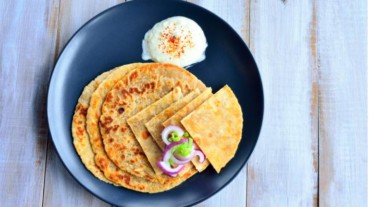
We Indians have long underestimated the traditional wisdom passed on to us by our ancestors. This underestimation happens to be applicable even when it comes to weight loss and healthy eating habits.
While our grandparents and parents managed to stay fit despite eating staple Indian food throughout their lives, we millennials are particularly attracted to the Western way of eating. The West glorifies a certain out-of-reach avocado and the Indian population goes out of its way to source it for the sake of the weight loss it promises.
Another very common approach that many people adopt while losing weight is giving up on staple Indian foods such as chapati, rice, pulses, and other whole grains. This has become even more common ever since we were bitten by the keto diet/low-carb bug.
However, according to several experts, including nutritionist, wellness coach, and founder of Nutriactivania Avni Kaul—we must not give up on our staple diet for the sake of losing weight. Here are all the reasons why:

1. Your perception of staple Indian foods is completely wrong
You know, if you check the calorie count of the so-called healthier breakfast option of muesli and milk on any health app, you’ll realise that it contains around 300-plus calories per serving with 11.4 grams of protein, 2.4 grams of fibre, 12.6 grams of fat, and 40.8 grams of carbs.
Enter the desi breakfast staple: Aloo parantha, which might just seem completely out of line for you if you’re trying to lose weight. However, upon checking its nutritional value, you’ll know that it has around 180-200 calories and when further broken down, amounts to 6.3 grams of fat (half of that of a cereal serving), 32 gms carbs (more than 10 gms lesser than a cereal serving), and 4.4 gms of fiber (twice that of cereal serving).
The case of other staples such as rice and pulses is also similar because we tend to dismiss these whole grains thinking that they’re nothing but a powerhouse of calories—completely ignoring the fact that they’re a powerhouse of fibre and amino acids along with several essential micro nutrients.
2. Indian food isn’t the problem, our version of it is
“Eating parantha is not harmful. But the way they’re made these is what makes them backfire. If, instead of stuffing the paranthas with potatoes, you stuff them with vegetables, such as spinach, carrot, cabbage, beetroot etc and instead of deep-frying them in refined oil, you apply minimal ghee on top of it once it is fully cooked, you’ll be just fine when eating them,” says Kaul.

“Similarly, rice can be eaten too but only in moderation. Also, one thing that works in favour of rice is that it contains less fat as compared to roti. But instead of white rice opt for brown rice (with a higher fibre content) for better results,” she adds.
3. Your body is simply used to Indian staples
You might have heard several celebrity dieticians talking about the fact that we should eat like our ancestors did and continue to eat what we’ve been eating since childhood.
Select Topics of your interest and let us customize your feed.
PERSONALISE NOWAccording to Kaul, this theory holds true. “Changing your food habits is never easy especially when they are a part of your staple diet. Your taste buds develop over the years and it is difficult to overlook them even when you want to lose weight,” Kaul says.
Hence, eating what your taste buds and body is already accustomed to a sustainable way of losing weight, you see.
4. The Indian diet takes care of your health like no other
A typical home cooked Indian-thali consists of a chapati or rice, a vegetable, a bowl of dal, curd, and salad—makes for a perfect, clean, and balanced meal.

With healthy carbs and fibre from rice/roti, protein and fiber from dal and vegetable, good fat and protein from curd, fibre and minerals from salad, and an immunity boost from all the spices used in the meal—there is no meal as nutritious as a traditional Indian meal for sure.
However, you’ve got to keep these pointers in mind:
Get Latest Updates on Healthy Eating, Nutrition, Recipes, Superfoods